Desa VGL30PRA, VGL18PRA, VGL18NRA, VGL24NRA, VGL24PRA User Manual
...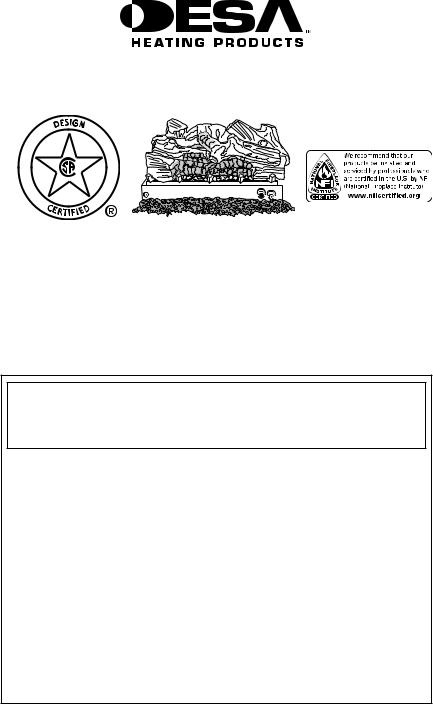
UNVENTED (VENT-FREE) GAS LOG HEATER OWNER’S OPERATION AND INSTALLATION MANUAL
Also Design-Certified As Vented Decorative Appliances When
Not Used With Hand-Held Thermostat Remote
MODELS
VGL18NRA, VGL18PRA
VGL24NRA, VGL24PRA
VGL30NRA, VGL30PRA
WARNING: If the information in this manual is not followed exactly, a fire or explosion may result causing property damage, personal injury or loss of life.
—Do not store or use gasoline or other flammable vapors and liquids in the vicinity of this or any other appliance.
—WHAT TO DO IF YOU SMELL GAS
•Do not try to light any appliance.
•Donottouchanyelectricalswitch;donotuseany phone in your building.
•Immediatelycallyourgassupplierfromaneighbor’s phone. Follow the gas supplier’s instructions.
•If you cannot reach your gas supplier, call the fire department.
—Installationandservicemustbeperformedbyaqualified installer, service agency or the gas supplier.
Save this manual for future reference. For more information, visit www.desatech.com
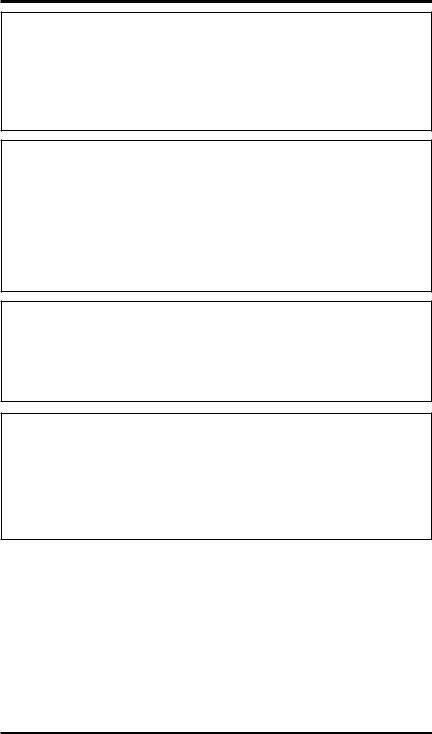
WARNING: Improper installation, adjustment, alteration, service or maintenance can cause injury or propertydamage.Refertothismanualforcorrectinstallation and operational procedures. For assistance or additional information consult a qualified installer, service agency or the gas supplier.
WARNING: This appliance is for installation only in a solid-fuel burning masonry or UL127 factory-built fireplace or in a listed ventless firebox enclosure. It is design-certified for these installations in accordance with ANSI Z21.11.2. Exception: Do not install this appli- anceinafactory-builtfireplacethatincludesinstructions stating it has not been tested or should not be used with unvented gas logs.
WARNING: This is an unvented gas-fired heater. It uses air (oxygen) from the room in which it is installed. Provisions for adequate combustion and ventilation air must beprovided.RefertoAir for Combustion and Ventilation section on page 6 of this manual.
This appliance may be installed in an aftermarket,* permanently located, manufactured (mobile) home, where not prohibited by local codes.
This appliance is only for use with the type of gas indicated on the rating plate. This appliance is not convertible for use with other gases.
* Aftermarket: Completion of sale, not for purpose of resale, from the manufacturer
TABLE OF CONTENTS
Safety Information ............................................... |
3 |
Product Identification........................................... |
5 |
Local Codes ........................................................ |
5 |
Unpacking ........................................................... |
5 |
Product Features................................................. |
5 |
Remote Control Accessories............................... |
5 |
Air For Combustion and Ventilation..................... |
6 |
Installation ........................................................... |
8 |
Operating heater ............................................... |
19 |
Inspecting Burners ............................................ |
22 |
Cleaning and Maintenance |
................................ |
23 |
Troubleshooting................................................. |
|
24 |
Wiring Diagram.................................................. |
|
28 |
Service Hints ..................................................... |
|
28 |
Technical Service .............................................. |
|
28 |
Replacement Parts............................................ |
|
28 |
Specifications .................................................... |
|
28 |
Accessories....................................................... |
|
29 |
Illustrated Parts Breakdown .......and Parts List |
30 |
|
Warranty Information........................... |
Back Cover |
|
2 |
www.desatech.com |
112882-01D |
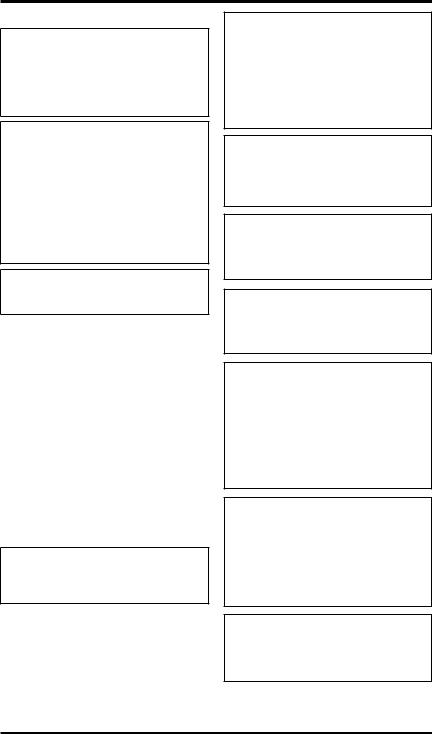
SAFETY INFORMATION
 WARNING:Thisproductcontainsand/orgenerateschemicals known to the State of California to cause cancer or birth defects or other reproductive harm.
WARNING:Thisproductcontainsand/orgenerateschemicals known to the State of California to cause cancer or birth defects or other reproductive harm.
IMPORTANT: Read this owner’s manualcarefullyandcompletely before trying to assemble, operate or service this heater.
Improper use of this heater can cause serious injury or death from burns, fire, explosion, electrical shock and carbon monoxide poisoning.
 DANGER:Carbonmonoxide poisoning may lead to death!
DANGER:Carbonmonoxide poisoning may lead to death!
CarbonMonoxidePoisoning:Earlysignsofcarbon monoxide poisoning resemble the flu, with headaches, dizziness or nausea. If you have these signs, the heater may not be working properly. Get fresh air at once! Have heater serviced. Some people are more affected by carbon monoxide than others. These include pregnant women, people with heart orlungdiseaseoranemia,thoseundertheinfluence of alcohol and those at high altitudes.
Natural and Propane/LP Gas: Natural and pro- pane/LPgasesareodorless.Anodor-makingagent isaddedto the gas.Theodorhelps youdetecta gas leak. However, the odor added to the gas can fade. Gas may be present even though no odor exists.
Make certain you read and understand all warnings. Keep this manual for reference. It is your guide to safe and proper operation of this heater.
 WARNING: Any change to this heater or its controls can be dangerous.
WARNING: Any change to this heater or its controls can be dangerous.
 WARNING:Donotallowfans toblowdirectlyintothefireplace. Avoidanydraftsthatalterburner
WARNING:Donotallowfans toblowdirectlyintothefireplace. Avoidanydraftsthatalterburner
flame patterns. Ceiling fans can create drafts that alter burner flame patterns. Altered burner patterns can cause sooting.
 WARNING:Donotuseablower insert, heat exchanger insert orotheraccessorynotapproved for use with this heater.
WARNING:Donotuseablower insert, heat exchanger insert orotheraccessorynotapproved for use with this heater.
Due to high temperatures, the applianceshouldbelocatedout oftrafficandawayfromfurniture and draperies.
Do not place clothing or other flammable material on or near the appliance. Never place any objects on the heater.
Heaterbaseassemblybecomes very hot when running heater.
Keep children and adults away from hot surface to avoid burns or clothing ignition. Heater will remain hot for a time after shutdown.Allowsurfacetocool before touching.
Carefully supervise young children when they are in the room withheater.Whenusingthehandheld remote accessory, keep selectorswitchintheOFFposition to prevent children from turning on burners with remote.
Keep the appliance area clear and free from combustible materials, gasoline and other flammable vapors and liquids.
112882-01D |
www.desatech.com |
3 |

SAFETY INFORMATION
Continued
1.This appliance is only for use with the type of gasindicatedontheratingplate.Thisappliance is not convertible for use with other gases.
2.Do not place propane/LP supply tank(s) inside any structure. Locate propane/LP supply tank(s) outdoors (propane/LP units only).
3.To prevent performance problems, the use of a propane/LP fuel tank of less than 100 lb. capacity is not recommended (propane/LP units only).
4.If you smell gas
•shut off gas supply
•do not try to light any appliance
•donottouchanyelectricalswitch;donotuse any phone in your building
•immediately call your gas supplier from a neighborʼs phone. Follow the gas supplierʼs instructions
•if you cannot reach your gas supplier, call the fire department
5.This heater shall not be installed in a bedroom orbathroomunlessinstalledas aventedappliance(seeInstalling Damper ClampAccessory for Vented Operation, page 12).
6.Before installing in a solid fuel burning fireplace, the chimney flue and firebox must be cleanedofsoot,creosote,ashesandloosepaint by a qualified chimney cleaner. Creosote will ignite if highly heated. A dirty chimney flue maycreateanddistributesootwithinthehouse. Inspect chimney flue for damage. If damaged, repair flue before operating heater.
7.Do not burn solid-fuel in a masonry or UL127 factory-built fireplace in which a vent-free room heater is installed.
8.If fireplace has glass doors, never operate this heater with glass doors closed. If you operate heater with doors closed, heat buildup inside fireplace will cause glass to burst. Make sure there are no obstructions across openings of fireplace.
9.This log heater is designed to be smokeless. If logs ever appear to smoke, turn off heater and call a qualified service person. Note: During initialoperation,slightsmokingmayoccurdue tologcuringandheaterburningmanufacturing residues.
10.To prevent the creation of soot, follow the instructions in Cleaning and Maintenance, page 23.
11.Before using furniture polish, wax, carpet cleaner or similar products, turn heater off. If heated, the vapors from these products may create a white powder residue within burner box or on adjacent walls or furniture.
12.This heater needs fresh, outside air ventilation torunproperly.ThisheaterhasanOxygenDepletion Sensing (ODS) safety shutoff system. The ODS shuts down the heater if not enough fresh air is available. See Air for Combustion andVentilation,page6.Ifheaterkeepsshutting off, see Troubleshooting, page 24.
13.Do not run heater
•where flammable liquids or vapors are used or stored
•under dusty conditions
14.Do not use this heater to cook food or burn paper or other objects.
15.Do not use heater if any part has been exposed to or under water. Immediately call a qualified service technician to inspect the room heater and to replace any part of the control system and any gas control which has been under water.
16.Do not operate heater if any log is broken. Do not operate heater if a log is chipped (dimesized or larger).
17.Turn heater off and let cool before servicing, installing or repairing. Make sure the remote selector switch is in the OFF position. Only a qualified service personshouldinstall, service or repair heater.
18.Make sure the remote selector switch is in the OFF position when you are away from home for long periods of time.
19.This heater must not be connected to any external electrical source.
20.Operating heater above elevations of 4,500 feet may cause pilot outage.
21.Provide adequate clearances around air openings.
State of Massachusetts: The installation must be made by a licensed plumber or gas fitter in the Commonwealth of Massachusetts.
Sellers of unvented propane or natural gas-fired supplemental room heaters shall provide to each purchaser a copy of 527 CMR 30 upon sale of the unit.
Vent-free gas products are prohibited for bedroom and bathroom installation in the Commonwealth of Massachusetts.
4 |
www.desatech.com |
112882-01D |
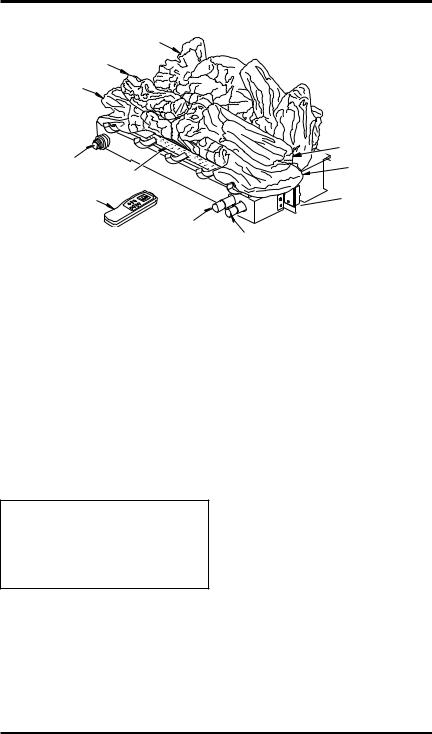
PRODUCT IDENTIFICATION
Rear Log
Left Top Log
Left Bottom Log

 Right Crossover Log
Right Crossover Log
Electronic
Ignitor Button
Ember Bed
Burner
Right Top Log
Right

 Bottom Log
Bottom Log
Optional Remote
Control
Flame Adjustment
Knob



 Remote Sensor
Remote Sensor 

 with Switch
with Switch
Control Knob
Figure 1 - Vent-Free Gas Log Heater
LOCAL CODES
Install and use heater with care. Follow all local codes. In the absence of local codes, use the latest edition of The National Fuel Gas Code, ANSI Z223/NFPA 54*.
*Available from:
American National Standards Institute, Inc.
1430 Broadway
New York, NY 10018
National Fire Protection Association, Inc.
Batterymarch Park
Quincy, MA 02269
Note: Where listed vented decorative logs are required, thermostat operation is not permitted.
UNPACKING
 CAUTION:Donotremovethe dataplatesattachedtotheheater base assembly. The data plates contain important warranty and safety information.
CAUTION:Donotremovethe dataplatesattachedtotheheater base assembly. The data plates contain important warranty and safety information.
1.Remove logs and heater base assembly from carton. Note: Do not pick up heater base assembly by back burner. This could damage heater.
2.Remove all protective packaging applied to logs and heater for shipment.
3.Check all items for any shipping damage. If damaged, promptly inform dealer where you bought heater.
PRODUCT FEATURES
OPERATION
This heater is clean burning. It requires no outside venting.Thereisnoheatlossoutaventorupachimney. Heat is generated by realistic dancing, yellow flames. This heater is designed for vent-free operation with flue damper closed. It has been tested and approved to ANSI Z21.11.2 standard for unvented heaters.Thisheatermayalsobeoperatedasavented decorative (ANSI Z21.60) product by opening flue damper (non-thermostat models only).
SAFETY PILOT
This heater has a pilot with an Oxygen Depletion Sensing (ODS) safety shutoff system. The ODS/pilot is a required feature for vent-free room heaters.The ODS/pilot shuts off the heater if there is not enough fresh air.
ELECTRONIC IGNITION SYSTEM
Thisheaterhasanelectronicignitor.Thissystemrequires no matches or other sources to light heater.
REMOTE CONTROL
ACCESSORIES
There are two optional remote controls that can be purchased separately for this log heater:
•hand-held ON/OFF remote
•hand-held thermostat remote See Accessories, page 29.
The hand-held thermostat may not be used where vented decorative listing is required.
112882-01D |
www.desatech.com |
5 |

AIR FOR COMBUSTION AND VENTILATION
 WARNING:Thisheatershall not be installed in a confined space or unusually tight constructionunlessprovisionsare providedforadequatecombustionandventilationair.Readthe followinginstructionstoinsure proper fresh air for this and other fuel-burning appliances in your home.
WARNING:Thisheatershall not be installed in a confined space or unusually tight constructionunlessprovisionsare providedforadequatecombustionandventilationair.Readthe followinginstructionstoinsure proper fresh air for this and other fuel-burning appliances in your home.
Todayʼs homes are built more energy efficient than ever. New materials, increased insulation and new construction methods help reduce heat loss in homes. Home owners weather strip and caulk around windows and doors to keep the cold air out and the warm air in. During heating months, home owners want their homes as airtight as possible.
While it is good to make your home energy efficient, your home needs to breathe. Fresh air must enter your home.All fuel-burning appliances need fresh air for proper combustion and ventilation.
Exhaust fans, fireplaces, clothes dryers and fuel burning appliances draw air from the house to operate. You must provide adequate fresh air for these appliances. This will insure proper venting of vented fuel-burning appliances.
PROVIDING ADEQUATE VENTILATION
The following are excerpts from National Fuel Gas Code, ANSI Z223.1/NFPA 54, Section 5.3, Air for Combustion and Ventilation.
All spaces in homes fall into one of the three following ventilation classifications:
1.Unusually Tight Construction
2.Unconfined Space
3.Confined Space
The information on pages 6 through 8 will help you classify your space and provide adequate ventilation.
Unusually Tight Construction
The air that leaks around doors and windows may provide enough fresh air for combustion and ventilation. However, in buildings of unusually tight construction, you must provide additional fresh air.
Unusually tight construction is defined as construction where:
a.walls and ceilings exposed to the outside atmosphere have a continuous watervaporretarderwitharatingofone perm (6 x 10-11 kg per pa-sec-m2) or less with openings gasketed or sealed and
b.weather stripping has been added on openable windows and doors and
c.caulking or sealants are applied to areas such as joints around window and door frames, between sole plates and floors, between wall-ceiling joints, between wall panels, at penetrations for plumbing, electrical and gas lines and at other openings.
If your home meets all of the three criteria above, you must provide additional fresh air. See Ventilation Air From Outdoors, page 8.
If your home does not meet all of the three criteria above, proceed to Determining Fresh-Air Flow For Heater Location.
Confined Space and Unconfined Space
TheNational Fuel Gas Code, ANSI Z223.1/NFPA 54 defines a confined space as a space whose volume is less than 50 cubic feet per 1,000 Btu per hour (4.8 m3 per kw) of the aggregate input rating of all appliances installed in that space and an unconfined space as a space whose volume is not less than 50 cubic feet per 1,000 Btu per hour (4.8 m3 per kw) of the aggregate input rating of all appliances installed in that space. Rooms communicating directly with the space in which the appliances are installed*, through openings not furnished with doors, are considered a part of the unconfined space.
* Adjoining rooms are communicating only if therearedoorlesspassagewaysorventilationgrills between them.
DETERMINING FRESH-AIR FLOW FOR FIREPLACE LOCATION
Determining if You Have a Confined or Unconfined Space
Use this work sheet to determine if you have a confined or unconfined space.
Space: Includes the room in which you will install fireplace plus any adjoining rooms with doorless passageways or ventilation grills between the rooms.
1.Determine the volume of the space (length x width x height).
Length x Width x Height =__________cu. ft. (volume of space)
6 |
www.desatech.com |
112882-01D |
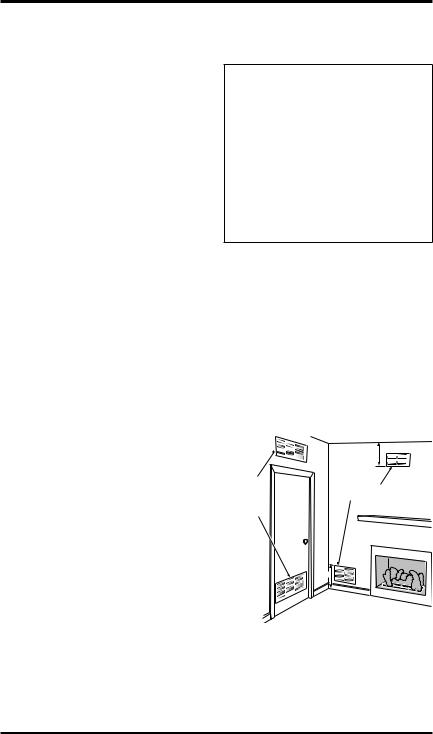
AIR FOR COMBUSTION AND VENTILATION
Continued
Example: Space size 20 ft. (length) x 16 ft. (width) x 8 ft. (ceiling height) = 2,560 cu. ft. (volume of space)
If additional ventilation to adjoining room is supplied with grills or openings, add the volume of these rooms to the total volume of the space.
2.Multiply the space volume by 20 to determine the maximum Btu/Hr the space can support.
__________ (volume of space) x 20 = (Maximum Btu/Hr the space can support)
Example: 2,560 cu. ft. (volume of space) x 20 = 51,200 (maximum Btu/Hr the space can support)
3.Add the Btu/Hr of all fuel burning appliances in the space.
Vent-free fireplace |
__________ Btu/Hr |
Gas water heater* |
__________ Btu/Hr |
Gas furnace |
__________ Btu/Hr |
Vented gas heater |
__________ Btu/Hr |
Gas fireplace logs |
__________ Btu/Hr |
Other gas appliances* |
+ ________ Btu/Hr |
Total |
= ________ Btu/Hr |
* Do not include direct-vent gas appliances. Di- rect-ventdrawscombustionairfromtheoutdoors and vents to the outdoors.
Example: |
40,000 |
|
Gas water heater |
||
__________ Btu/Hr |
||
Vent-free fireplace |
39,000 |
|
+ ________ Btu/Hr |
||
Total |
79,000 |
|
= ________ Btu/Hr |
4.Compare the maximum Btu/Hr the space can support with the actual amount of Btu/Hr used.
_________ Btu/Hr(maximumthespacecansupport)
_________ Btu/Hr (actual amount of Btu/Hr used)
Example: 51,200 Btu/Hr (maximum the space can support)
79,000 Btu/Hr (actual amount of Btu/Hr used)
The space in the example is a confined space because the actual Btu/Hr used is more than the maximum Btu/Hr the space can support. You must provide additional fresh air. Your options are as follows:
A.Reworkworksheet,addingthespaceofanadjoiningroom.Iftheextraspaceprovidesanunconfined space, remove door to adjoining room or add ventilation grills between rooms. See Ventilation Air From Inside Building.
B.Vent room directly to the outdoors. See Ventilation Air From Outdoors, page 8.
C.Install a lower Btu/Hr fireplace, if lower Btu/Hr size makes room unconfined.
If the actual Btu/Hr used is less than the maximum Btu/Hr the space can support, the space is an unconfined space. You will need no additional fresh air ventilation.
 WARNING: If the area in which the heater may be operatedissmallerthanthatdefined as an unconfined space or if the building is of unusually tight construction, provide adequate combustion and ventilation air byoneofthemethodsdescribed in the National Fuel Gas Code, ANSIZ223.1/NFPA54Section5.3 or applicable local codes.
WARNING: If the area in which the heater may be operatedissmallerthanthatdefined as an unconfined space or if the building is of unusually tight construction, provide adequate combustion and ventilation air byoneofthemethodsdescribed in the National Fuel Gas Code, ANSIZ223.1/NFPA54Section5.3 or applicable local codes.
VENTILATION AIR
Ventilation Air From Inside Building
This fresh air would come from an adjoining unconfined space. When ventilating to an adjoining unconfined space, you must provide two permanent openings: one within 12" of the ceiling and one within 12" of the floor on the wall connecting the two spaces (see options 1 and 2, Figure 2).You can also remove door into adjoining room (see option 3, Figure 2). Follow the National Fuel Gas Code, ANSI Z223.1/NFPA 54, Section 5.3, Air for Combustion and Ventilation for required size of ventilation grills or ducts.
|
|
12" |
|
Ventilation |
|
Ventilation Grills |
|
Grills |
|
||
Into Adjoining |
Or |
Into Adjoining Room, |
|
Room, |
Option 2 |
||
Remove |
|||
Option 1 |
|
||
Door into |
|
||
|
|
||
|
Adjoining |
|
|
|
Room, |
|
|
|
Option |
|
|
|
3 |
|
|
|
|
12" |
Figure 2 - Ventilation Air from Inside Building
112882-01D |
www.desatech.com |
7 |
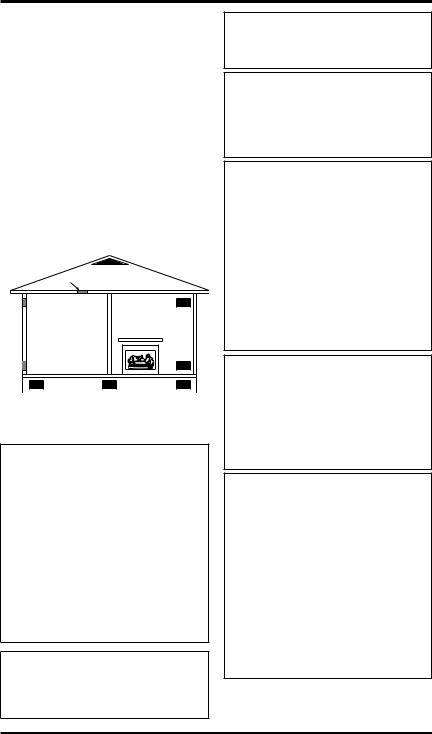
AIR FOR COMBUSTION AND VENTILATION
Continued
Ventilation Air From Outdoors
Provideextrafreshairbyusingventilationgrillsor ducts.You must provide two permanent openings: one within 12" of the ceiling and one within 12" of the floor. Connect these items directly to the outdoors or spaces open to the outdoors. These spaces include attics and crawl spaces. Follow the
National Fuel Gas Code, ANSI Z223.1/NFPA 54, Section 5.3,Air for Combustion and Ventilation for required size of ventilation grills or ducts.
IMPORTANT: Do not provide openings for inlet or outlet air into attic if attic has a thermostatcontrolledpowervent.Heatedairenteringtheattic will activate the power vent.
|
Outlet |
Ventilated |
|
Attic |
|
|
Air |
|
|
|
|
Outlet |
|
|
Air |
|
To Attic |
|
|
|
|
|
To |
|
|
Crawl |
Inlet |
|
Space |
|
|
|
Air |
|
|
|
Inlet Air |
Ventilated |
|
Crawl Space |
|
|
|
Figure 3 - Ventilation Air from Outdoors
INSTALLATION
NOTICE:Thisheaterisintended for use as supplemental heat. Use this heater along with your primary heating system. Do not install this heater as your primary heat source. If you have a centralheatingsystem,youmay run system’s circulating blower whileusingheater.Thiswillhelp circulatetheheatthroughoutthe house. In the event of a power outage, you can use this heater as your primary heat source.
NOTICE:Stateorlocalcodesmay onlyallowoperationofthisappliance in a vented configuration.
Check your state or local codes.
 WARNING: A qualified service person must install heater. Follow all local codes.
WARNING: A qualified service person must install heater. Follow all local codes.
 WARNING: If optional handheldremoteaccessoryhasbeen installed,makesuretheselector switch is in the OFF position before installing heater.
WARNING: If optional handheldremoteaccessoryhasbeen installed,makesuretheselector switch is in the OFF position before installing heater.
 WARNING: Before installing in a solid fuel burning fireplace, the chimney flue and firebox must be cleaned of soot, creosote,ashes andloosepaintbya qualifiedchimneycleaner.Creosote will ignite if highly heated. A dirty chimney flue may create and distribute soot within the house. Inspect chimney flue for damage. If damaged, repair flue before operating heater.
WARNING: Before installing in a solid fuel burning fireplace, the chimney flue and firebox must be cleaned of soot, creosote,ashes andloosepaintbya qualifiedchimneycleaner.Creosote will ignite if highly heated. A dirty chimney flue may create and distribute soot within the house. Inspect chimney flue for damage. If damaged, repair flue before operating heater.
 WARNING: Seal any fresh air vents or ash clean-out doors located on floor or wall of fireplace. If not, drafting may cause pilot outage or sooting. Use a heat-resistant sealant. Do not seal chimney flue damper.
WARNING: Seal any fresh air vents or ash clean-out doors located on floor or wall of fireplace. If not, drafting may cause pilot outage or sooting. Use a heat-resistant sealant. Do not seal chimney flue damper.
 WARNING: Never install the heater
WARNING: Never install the heater
•in a bedroom or bathroom unless installed as a vented appliance, see page 10.
•in a recreational vehicle
•where curtains, furniture, clothing or other flammable objectsarelessthan42inches from the front, top or sides of the heater
•in high traffic areas
•in windy or drafty areas
8 |
www.desatech.com |
112882-01D |
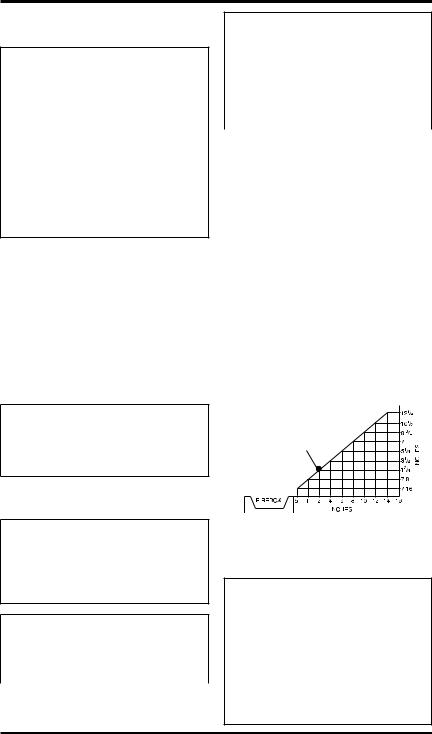
INSTALLATION
Continued
 CAUTION: This heater creates warm air currents. These currents move heat to wall surfaces next to heater. Installing heater next to vinyl or cloth wall coverings or operating heater where impurities (such as, but not limited to, tobacco smoke, aromatic candles, cleaning fluids,oilorkerosenelamps,etc.)in the air exist, may discolor walls or cause odors.
CAUTION: This heater creates warm air currents. These currents move heat to wall surfaces next to heater. Installing heater next to vinyl or cloth wall coverings or operating heater where impurities (such as, but not limited to, tobacco smoke, aromatic candles, cleaning fluids,oilorkerosenelamps,etc.)in the air exist, may discolor walls or cause odors.
IMPORTANT: Vent-free heaters add moisture to the air. Although this is beneficial, installing heaterinroomswithoutenoughventilationairmay cause mildew to form from too much moisture. See Air for Combustion and Ventilation, pages 6 through 8.
CHECK GAS TYPE
Use the correct gas type (natural or propane/LP) for your unit. If your gas supply is not correct, do not install heater. Call dealer where you bought heater for proper type heater.
 WARNING: This appliance is equipped for (natural or propane/LP) gas. Field conversion is not permitted.
WARNING: This appliance is equipped for (natural or propane/LP) gas. Field conversion is not permitted.
INSTALLATION AND CLEARANCES
(Vent-Free Operation Only)
 WARNING: Maintain the minimum clearances. If you can, provide greater clearances fromfloor,ceilingandadjoining wall.
WARNING: Maintain the minimum clearances. If you can, provide greater clearances fromfloor,ceilingandadjoining wall.
MINIMUM FIREPLACE
CLEARANCE TO
COMBUSTIBLE MATERIALS
Log Size |
Side Wall |
Ceiling |
18", 24", 30" |
16" |
42" |
|
|
|
LOG SIZING REQUIREMENTS
|
Minimum Firebox Size |
|||
Log |
|
|
Front |
Rear |
Size |
Height |
Depth |
Width |
Width* |
|
|
|
|
|
18",24", |
17" |
13" |
28" |
21" |
30" |
|
|
|
|
Minimum Firebox Size With Blower |
||||
18",24", |
17" |
14" |
34" |
22 3/8" |
30" |
|
|
|
|
*Measured at 13" depth
Carefully follow the instructions below. This will ensuresafeinstallationintoamasonry,UL127-listed manufactured fireplace or listed vent-free firebox.
MinimumClearancesforSideCombustible Material, Side Wall and Ceiling
A.Clearances from the side of the fireplace cabinet to any combustible material and wall should follow diagram in Figure 4.
Example: The face of a mantel, bookshelf, etc. is made of combustible material and protrudes 3 1/2" from the wall. This combustible material must be 4" from the side of the fireplace opening (see Figure 4).
Note: When installing your gas logs into a manufactured firebox, follow firebox manufacturerʼs instructions for minimum clearances to combustible materials.
B.Clearancesfromthetopofthefireplaceopening to the ceiling should not be less than 42 inches.
Example |
* |
*Minimum 16 inches from Side Wall
Figure 4 - Minimum Clearance for Side Combustible Material, Side Wall and Ceiling
NOTICE: Manual control heaters may be used as a vented product. If so, you must always run heater with chimney flue damper open. If running heater with damper open, noncombustiblematerialabovefireplaceopeningisnotneeded.Goto
InstallingDamperClampAccessory for Vented Operation, page 12.
112882-01D |
www.desatech.com |
9 |
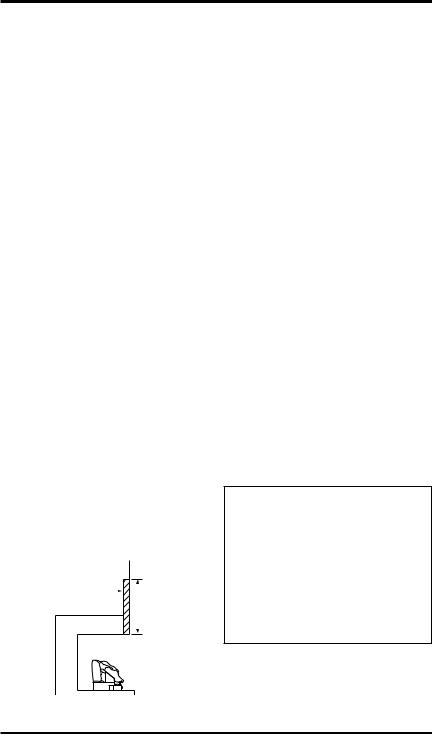
INSTALLATION
Continued
Minimum Noncombustible Material Clearances
If Not Using Mantel
Note: If using a mantel, proceed to If Using Mantel. If not using a mantel, follow the information below.
Youmusthavenoncombustiblematerial(s)abovethe fireplaceopening.Noncombustiblematerials(suchas slate,marble,tile,etc.)mustbeatleast1/2inchthick. With sheet metal, you must have noncombustible material behind it. Noncombustible material must extend at least 8" up (for all models). If noncombustible material is less than 12", you must install the fireplace hood accessory (24" and 30" models only). See Figure 5 for minimum clearances.
IMPORTANT:Ifyoucannotmeettheseminimum clearances, you must operate heater with chimney flue damper open. Go to Installing Damper Clamp Accessory for Vented Operation, page 12.
Noncombustible |
|
Requirements |
||
Material |
|
for Safe |
||
Distance (A) |
|
Installation |
||
|
|
|
||
12" or more |
|
Noncombustible |
||
|
|
material okay. |
||
Between 8" and 12" |
|
Install fireplace hood |
||
|
|
accessory (GA6050, |
||
|
|
GA6052 or GA6053, |
||
|
|
see Accessories, |
||
|
|
page 29). |
||
Less than 8" |
|
Noncombustible |
||
|
|
material must be |
||
|
|
extended to at least |
||
|
|
8". See Between 8" |
||
|
|
and 12", above. If |
||
|
|
you cannot extend |
||
|
|
material, you must |
||
|
|
operate heater with |
||
|
|
flue damper open. |
||
|
|
|
|
|
Heat Resistant |
|
|
|
|
|
|
|
||
Material |
|
|
|
|
|
|
|
|
(A) |
|
|
|
|
|
Figure 5 - Heat Resistant Material (Slate,
Marble, Tile, etc.) Above Fireplace
If Using Mantel
You must have noncombustible material(s) above the fireplace opening. Noncombustible materials (such as slate, marble, tile, etc.) must be at least 1/2 inch thick. With sheet metal, you must have noncombustiblematerialbehindit.Noncombustible material must extend at least 8 inches up (for all models). If noncombustible material is less than 12", you must install the fireplace hood accessory (24"and30"modelsonly).Evenifnoncombustible material is more than 12", you may need the hood accessory to deflect heat away from your mantel shelf. See Figure 5 and Figures 6 and 7 on page 11 for minimum clearances.
IMPORTANT:Ifyoucannotmeettheseminimum clearances, you must operate heater with chimney flue damper open. Go to Installing Damper Clamp Accessory for Vented Operation, page 12.
MANTEL CLEARANCES
In addition to meeting noncombustible material clearances,youmustalsomeetrequiredclearances between fireplace opening and mantel shelf. If you do not meet the clearances listed below, you will need a hood.
Determining Minimum Mantel Clearances
If you meet minimum clearance between mantel shelf and top of fireplace opening, a hood is not required (see Figure 6, page 11).
Determining Minimum Mantel Clearances When Using a Hood
IfminimumclearancesinFigure6,page11arenot met, you must have a hood. When using a hood there are still certain minimum mantel clearances required. Follow minimum clearances shown in Figure 7, page 11 when using hood.
NOTICE: Surface temperatures ofadjacentwallsandmantelsbecomehotduringoperation.Walls and mantels above the firebox may become hot to the touch.
If installed properly, these temperaturesmeettherequirements ofthenationalproductstandard. Follow all minimum clearances shown in this manual.
10 |
www.desatech.com |
112882-01D |
